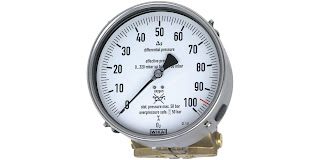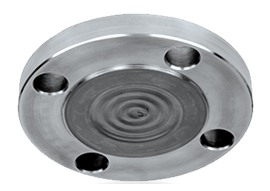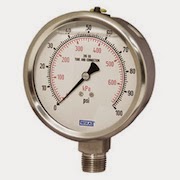Ashcroft, Inc. manufactures a wide variety of electronic and mechanical pressure and temperature instruments are produced in this facility under the brand names of Ashcroft®, Heise®and Weksler®. Ashcroft products are recognized as best-in-class for pressure and temperature measurement, including gauges, thermometers, switches, transducers, transmitters, instrument isolators and diaphragm seals and control and calibration equipment.
The Product Ordering Handbook includes descriptions, part numbers, and specifications for all Ashcroft products.
Download the Ashcroft Ordering Handbook from the M.S. Jacobs web site here.
Sponsored by M.S. Jacobs & Associates, a manufacturer’s representative and distributor of industrial instrumentation, control valves & process controls. Located in Pittsburgh, Pa. and covering Western Pennsylvania, West Virginia, and New York. Representing top lines in pressure, temperature, level, flow, analytical instruments and industrial valves.
Telephone: 800-348-0089 or MSJacobs.com
Showing posts with label pressure gauge. Show all posts
Showing posts with label pressure gauge. Show all posts
Differential Pressure Gauge for Level Indication on Liquefied Gas Tanks
 |
| A differential pressure gauge can be used to indicate liquid level in tanks of liquefied gas Image courtesy Wika |
The Cryo Gauge is designed to provide indication of the level of liquid in liquefied gas tanks, but can also serve in some other related applications. For cryo tank applications, several available measuring cells provide operating ranges that cover the most commonly used tank sizes and gas types. An optional manifold with a separate pressure gauge provides connectivity and an indication of working pressure, all in one compact station. Options for analog output, level switches, and remote data transfer are part of the flexible configuration.
More detail on the Cryo Gauge is provided in the datasheet included below. Whatever the application, share your pressure measurement challenges with process measurement experts, leveraging your own knowledge and experience with their product application expertise to develop effective solutions.
Process Measurement and Control: When To Use a Diaphragm Seal
 |
| Diaphragm seal for pressure measurement device Courtesy Wika |
Industrial processes commonly are associated with corrosive or toxic fluids, often at extreme pressure or temperature and containing various levels of solids. Any of these traits can pose substantial risk to process performance and uptime. Operations that process fluids will employ pressure measurement devices to monitor process performance and maintain system safety levels. There are many instances where characteristics of the process and its media are not compatible with pressure measurement devices. Here are some potentially problematic scenarios for pressure measurement instruments:
- Corrosive media that will prematurely deteriorate the pressure sensing element.
- Viscous or fibrous media, also those that may crystallize or polymerize, posing a risk of clogging channels, tubes, and orifices of pressure measurement devices.
- Media temperature that is beyond the rated range for the pressure measurement device has a potential to damage the instrument or cause error in the pressure reading.
- A measuring point that is remotely located from where a technician may need to observe the reading. Also conceivable, the pressure measurement device needs to be located away from other potentially damaging environmental conditions.
- The process requirements dictate specific hygienic requirements that are cause for the measurement device to be isolated from the medium.
- Toxic or otherwise hazardous media that must be contained.
- Excursions of system pressure may exceed the acceptable range of the instrument, potentially damaging the device.
 |
| Threaded diaphragm seal Courtesy Wika |
A solution which can provide protection from the items listed above, while still maintaining instrument response and accuracy is a diaphragm seal. Seals are placed between the pressure measurement device and the process media. The space between the diaphragm, which is flexible, and the sensor is filled with a fluid that will hydraulically transfer the pressure condition on the process side of the diaphragm to the sensor. The diaphragm serves as a physical barrier between the potentially damaging media and the instrument. Diaphragm seals are available in a wide variety of configurations to accommodate any media type or connection requirement.
Seal selection involves specifying the connections and form factor to properly mate the diaphragm with the instrument and the process, then selecting the diaphragm material that will be compatible with the media. The best way to achieve a positive solution is to share your requirements with a qualified assembler. They can help select the right diaphragm seal and mate it up with a pressure gauge, providing a complete assembly that is ready to be installed in your process.
When to Use Pressure Gauge Accessories
 |
| Pressure Gauge (Wika) |
Accessories for a pressure gauge may be the extra step needed for a successful, proactive, preventative maintenance program and for extending the life of pressure gauges in environments like oil and gas, petrochemical, and chemical plants. When a pressure gauge is paired with a mini-siphon, the gauge is protected from harmful steam, vapors and liquids. When a pressure gauge is paired with an overpressure protector, the gauge is protected from pressures exceeding its maximum pressure rating. When a pressure gauge is paired with a diaphragm seal, the gauge is protected from hot, viscous, contaminated or corrosive media. When a pressure gauge is paired with a snubber, the gauge is protected from pressure pulses.
Subscribe to:
Comments (Atom)
